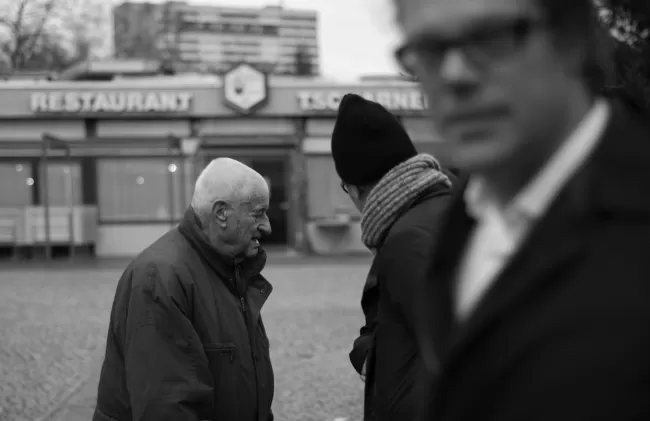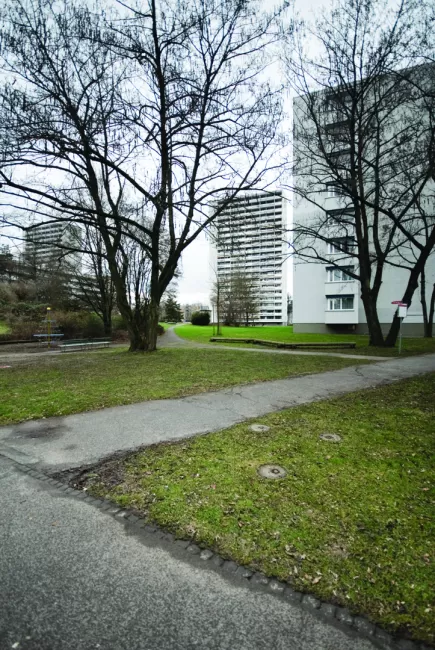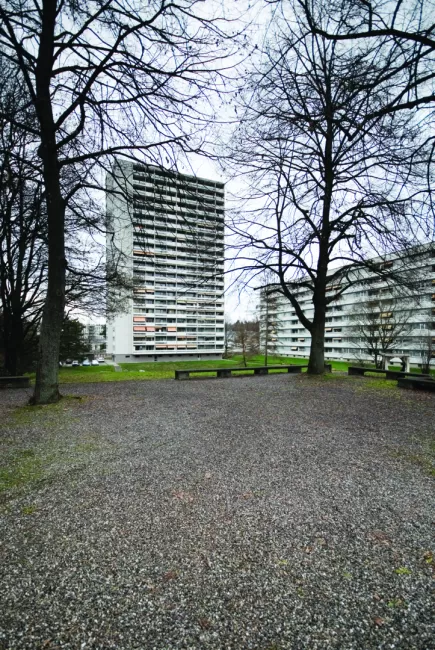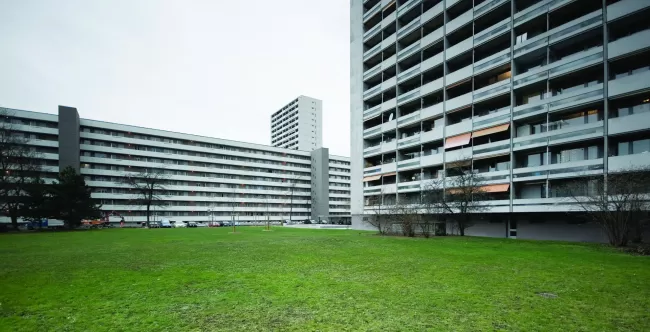Ulyss Strasser

Ulyss Strasser, Wim Eckert, Piet Eckert, Tscharnergut Bern, 2009
© Radek BruneckyUlyss Strasser. I was impressed by the over 80-year-old architect – the way that he led us through his life’s work at Tscharnergut. To authentically hear from this generation how they employed a studied principle to design an entire development of 1200 apartments while, in contrast, knowing the diminished scale that one senses from our own generation. Remarkably, many communities in Switzerland were simultaneously open to novel methods of dealing with contemporary urban conditions and requirements - the modern city quarter would stand outside of the center and, as such, need to virtually replace the city. The principles and a repertoire of varied schemes, which had been developed by the fathers of Modernity, were now ready to be implemented practically. Whether or not they functioned successfully seems to me a less relevant question. I am much more interested in how long our cities can sustain resistance and suppress growth and density within their territories; I am interested in how long they can continue to delegate their growth to the outskirts without any ambitions for an urban or aesthetic concept. Can we dismiss acute housing shortages, a completely overheated real estate market, and an exploding ecological footprint in the region as simply the price of an attractive city? How long can we afford to avoid creating a political concept for adaptable urban densification?
The time has come to rediscover an urban awareness in Switzerland. When an urban renewal project becomes window dressing instead of substance because the actual problem is not addressed, it is time for a “Big Move.” The rail transit systems of metropolitan regions, the S-Bahns, travel at capacity. In other words, the instrument for expansion within a modern metropolitan region which has been in place since the late 1980s has clearly exhausted its capabilities. What can we propose today for the urban territories of tomorrow?

It is interesting to compare Strasser’s initial position with our own. His generation was led decisively by the trends of “New Town Planning”1 and the expansion of the city into the outlying areas as a compositional exercise in the language of modernity. However, the challenge for a new “replacement” city, as Frisch already wittily suggested in 1953 in Cum grano salis,2 is that today this concept is no longer accepted as plausible because the cities are much too small and diffuse. Although one hears of such aims today, and the expansion of the city “next door” in a practically identical scale is imagined, such a plan would be incredible inefficient and illogical. With these ideas, one follows the same leanings as the old models for Swiss expansion, namely surrounding towns with yet smaller towns. Ultimately, this is the opposite of a visionary approach. Thus emerges a paradox and a sign of our times – political authority exists within the territories of our cities, but not a correlating desire to realize development and densification within the established urban boundaries. Simultaneously, the communities have lost the freedom to design and organize the growth. The result is an ambiguous urban fabric that covers many individual towns and is woven by a deregulated political system completely without focus.
In the 1970s, architects held complete trust in their abilities to create precise hypotheses about future cities. Today we realize that they never had this ability, yet the process itself has brought us clarity regarding the needs of existing cities. The political entities of the urban territories should convince constituents of the benefits of a city over the politically disorganized hybrids of the agglomeration.
Prioritizing the interests of a region does not typically come into conflict with the ambitions of individual municipalities. A solution that is applicable will be implemented, all others will be discarded. The opportunism leads to continuous sprawl.

Ultimately for Strasser, a proposal for large-scale can be married with the desire for quality and amicability. His efforts to build a functioning city-quarter in a meadow should guide further consideration of size, density, and scale in the context of existing cities. What Strasser accomplished in terms of a cost-effective alternative to the city, we should be able to expect from a city of today. Analogous to the pioneering spirit of those times, it would be worth considering where one plans city-quarters with a new density. These must be not only low-cost, but must be specially designed to offer variety. A “Special Density Zone” would not copy the developments in China, but would be a signal of an urban model of development oriented towards supplying solutions – to identify sections of the city that can withstand great alterations, that can create new real estate products, and that, with their special status, will not suffer from commonplace conflicts between scale, height, and neighborhood. Instead these areas should ultimately place priority on the desire for a centralized city that can guarantee attractive conditions in the long-term.
2 Max Frisch, “Cum grano salis: eine kleine Glosse zur schweizerischen Architektur“ (lecture for architects, Zurich, May 5, 1953).
